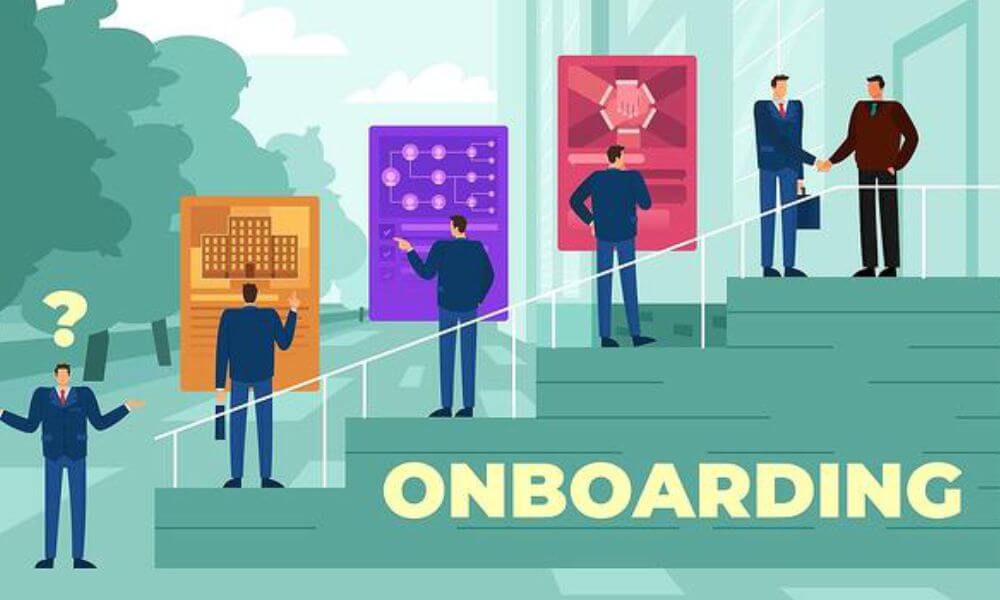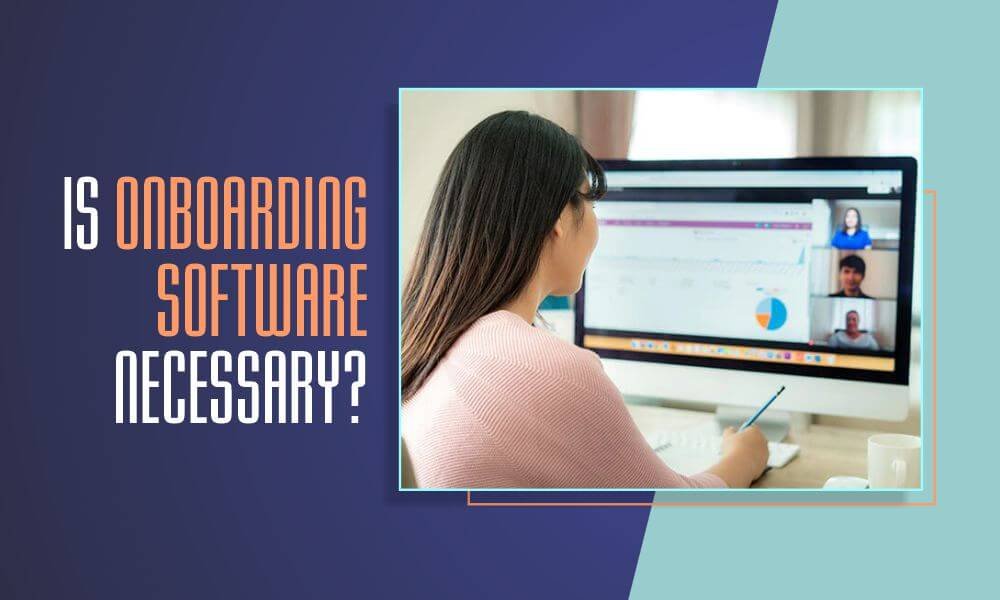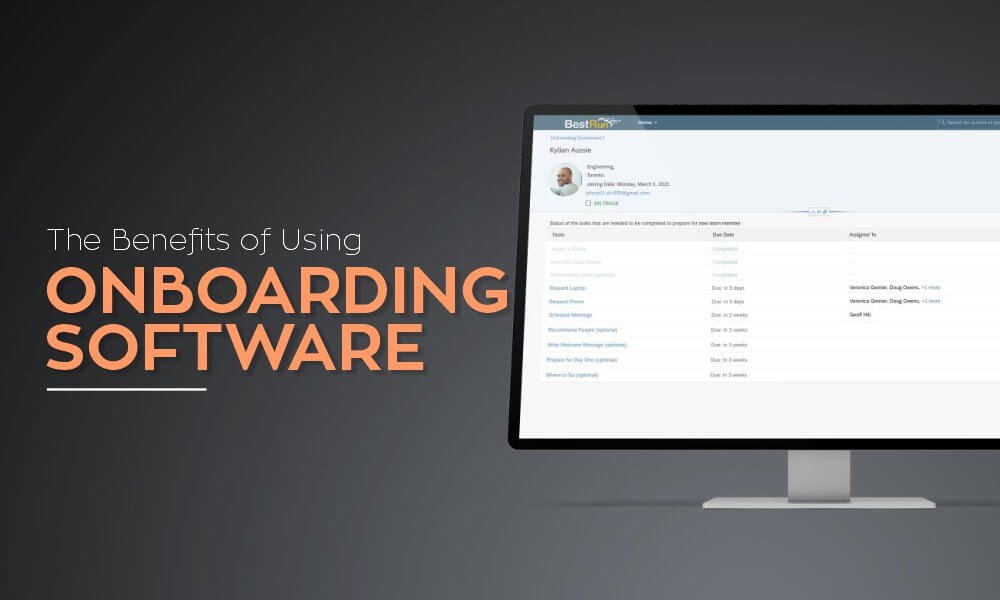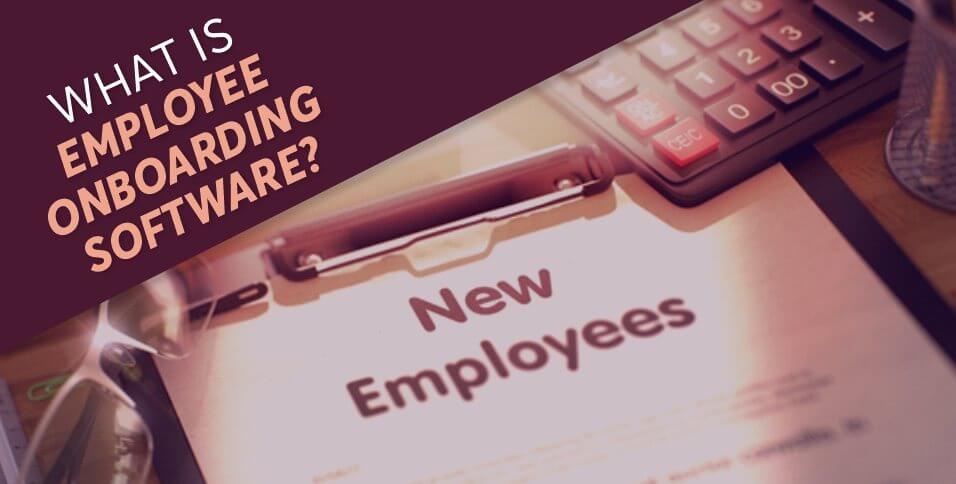Did you know that 40% of employees in the U.S. are actively looking for a new job in the hopes of quitting their current one?
Needless to say, hiring and retaining top talent is a never-ending challenge for many firms.
While we can’t do anything about the labor problem or the COVID-19 epidemic, we can actually decide how our company responds to them. It’s critical to consider how you can enhance your recruiting process at each step.
Your onboarding process is the process of getting a new employee acquainted with your company. Employee onboarding might take months, but having the right onboarding software can help speed things up.
Keep on reading for our full breakdown of the nuances of employee onboarding software and how it can streamline the hiring process, as well as the retainment of star employees.
The Basics of Employee Onboarding

It is the process of preparing new workers for success both in their roles and at the organization via onboarding. Onboarding is the process through which new employees learn what they need to know in order to succeed in their new position.
As part of the onboarding process, you’ll need to set up your devices, meet new coworkers, and learn about your company’s health benefits.
On the other hand, the onboarding procedure provides new employees with an opportunity to learn about your company’s key principles and operating procedures. To show off your company as a location where your new workers may grow and improve their careers, now is the moment to do so
When your new employee completes their onboarding training, they will know exactly what you expect of them. And, how they may contribute to the success of your firm.
From a few hours to two years, this procedure might vary greatly from one organization to the other. Most HR professionals will onboard new recruits within three months of their arrival. To a large extent, the pace at which your new recruit is able to learn and adjust to the position will determine when they are ready to begin working with you.
Three months and more is a considerable amount of time. By the conclusion of the program, you want to ensure that you have a completely engaged and pleased employee. This is an investment in your company’s resources.
Why Even Go Through an Onboarding Process?

Introducing your new employees to your organization and preparing them for their tasks is critical to a successful onboarding process. With the right processes in place, companies are more likely to retain their best employees for longer periods of time.
First impressions are essential – your new recruits have thoughts about your firm from the minute they start. Onboarding is the time when new recruits either get on board or conclude they’ve made a mistake.
How much time and money you spend on recruiting new personnel may make or break your company’s long-term success. The onboarding procedure alone may take up to three thousand dollars and one hundred man-hours for each new employee. If your onboarding process fails to get your new recruit up to speed, those statistics don’t reflect additional expenditures.
Think about it in the context of your everyday life. It takes an average of 100+ minutes each day for an employee to find the knowledge they need to accomplish their job.
This may cost your business hundreds of dollars per week, if not more. With good onboarding training, you may save a significant amount of money in the long run.
A well-executed onboarding strategy also aids in the retention of new employees. In the first 45 days of a job, over 20% of employees leave. It’s frequently the result of a poor onboarding experience for new employees.
If this occurs, your business will have to start over by finding a new employee. Furthermore, the expense of hiring the right person for the job is rising.
On the other hand, firms that are able to create an effective onboarding process enjoy fewer onboarding expenses, more retention, and better outcomes over time. Just implementing a structured onboarding process may increase new employee productivity by 50% or more. More than 69% of workers are more likely to remain with a firm for at least three years if their onboarding experience is excellent.
Focus on generating a solid first impression on your employees if you want them to get invested in the business culture. In other words, you need an onboarding procedure that gets people up to speed quickly.
To ensure that your new hires are happy in their positions, you should go through a thorough onboarding procedure.
Is Onboarding Software Necessary?

Onboarding software may assist any company. It doesn’t matter how big or little your organization is if you want to save money, time, and resources. However, there are specific situations in which it is imperative to give it considerable thought.
One is when you are transitioning from a traditional office environment to a virtual one. There are many individuals who have been able to change their work habits in this manner, but few have looked at the recruiting process. A large-scale undertaking may need the use of this strategy as well.
Additionally, this may be used for a massive recruiting campaign or one that is stretched out across a vast territory. The more paperwork you have to deal with, the more time and resources it’s taking away from other tasks and the more stressed out your HR staff is. Compliance requirements in certain businesses might ease some of the pressure you may be feeling.
An additional explanation might be a high rate of employee churn in the first phases of their employment. This might be a sign that your new hiring procedure isn’t doing a good job of integrating new hires and making them feel isolated and anxious. You can remedy this by the use of software, which is consistent and easy to use.
It’s possible that you’re just making a lot of errors. Perhaps some paperwork got overlooked or payroll isn’t done in a timely manner. All of this can be simply reviewed and confirmed.
The Benefits of Using Onboarding Software

There are a lot of reasons why you should look at software-based onboarding solutions.
You can use many of these regardless of the size of your company.
Go Paperless
To begin with, you may eliminate any paper documents.
Businesses tend to use lots of paper while signing agreements, verifying information, and dispersing training materials. You can do all of this now digitally. And, you can keep it in the same manner as before, thanks to the use of the software.
Additionally, you won’t have to comb through a ton of paper in search of the information you need. Add this to the environmental damage caused by paper use. Your carbon footprint may be significantly reduced if your workplace is paperless.
Better for Remote Working
The pandemic affected many firms, which lead to a shift to remote working.
Today’s workforce spreads across several locations and time zones. While there are many ways to make work more pleasant, just a handful provide online assistance for new employees.
A laptop and an Internet connection are all new recruits require. It’s possible to conduct onboarding tasks from the comfort of one’s own home thanks to the program. You’ll be able to keep tabs on their development in one place while they’re at it.
Ensure Uniformity
Onboarding new employees get more challenging as a firm grows in size. Individuals and departments will integrate into a program in a variety of ways, even if you’ve already established one. As a consequence, the outcomes will be diverse.
The use of a company-wide onboarding tool guarantees that you can treat new hires the same way. Regardless of the size of the organization, all employees will get the same training.
Tracking Accountability
In a fast-paced work atmosphere, new hires are frequently disregarded.
This leaves you with no means to verify that the information you’ve provided has been received and comprehended. This is no longer an issue thanks to the software, which makes new hires more proactive.
So as an employer you can keep tabs on how they’re doing. The responsibility shifts from you to them.
Quick Access to Employee Data
Employers and employees both benefit from onboarding software, which streamlines the onboarding process. Both sides have the information they need. Handbooks, contracts, and announcements about the workplace are all possible inclusions.
This is a big advantage since payroll is streamlined. In order for a new employee to get paid, HR has to do a lot of paperwork rapidly. Using HR onboarding software, they may enter payroll information on their own schedule, which saves them time.
It is possible to discover payroll software that is compatible with your current system. As a result, your operations will run more smoothly and mistakes will be less likely to occur.
Easy to Use and Saves You Time
All of these aspects make the whole procedure a lot simpler.
It eliminates the need for regular meetings, training days, and other responsibilities. This frees up your human resources and training teams to focus on more pressing issues.
In addition, once you pick the right one for your industry, like this one for manufacturing https://WorkBright.com/manufacturing-onboarding-software/, it’ll be smooth sailing.
Picking the Right Business Software: The Onboarding Edition
There are many onboarding software on the market, and all of them say that they’re perfect for you.
Regardless, you’ll want to pick HR onboarding software with the following characteristics.
Straightforward Implementation
Helping new employees learn about your company and its rules, vision, and purpose statements, and you can accomplish more via onboarding software.
As a consequence, new recruits’ onboarding training becomes easy to plan. Using onboarding software, you can collect forms (such as policy acknowledgments) electronically rather than in print form.
On-Time and Error-Free Boarding
To avoid human mistakes, avoid filling out numerous onboarding forms.
Using onboarding software, new employees may electronically fill out and sign all of the company’s required paperwork and documentation. On top of that, the program enables managers to create onboarding routines and monitor how new workers follow them, preventing confusion and potential blunders.
Onboarding Compliance
A new employee may need a number of compliance-related processes when hired.
A non-disclosure agreement, background check, and drug test, among other things, may be required of prospective workers. To ensure regulatory compliance, employee onboarding software creates an electronic trail that shows when papers are provided, reviewed, approved, and more.
On top of that, timestamped data provided by onboarding software make it simple to determine whether workers are conversant with key rules, laws, and regulations.
Welcome Portals
Employee welcome portals are a typical element of onboarding software since they engage new hires from the minute they’re employed.
For new employees, an onboarding site serves as a central point of information from which they may get all the information they want before starting work (start date, office location, directions, key contact details, etc.).
When it comes to interacting with your audience, the ability to upload photos and embed videos is critical. This can be for a welcome video from a company’s CEO, a look at the company’s culture (such as employee interviews and company outings), or an explanation of your brand’s core values and goals.
On the first day or even weeks, it should be simple for your portal to connect to papers or feature content that covers other critical information. Welcome portals are a great method to reassure new hires about what to anticipate from their first day on the job and beyond.
Task Management
HR isn’t responsible for all aspects of new hire onboarding. Often, responsibilities are delegated to several departments:
- Are the new employee’s laptop and email set up by IT?
- Is the payroll set up yet?
- Has their line manager scheduled meetings for new hire orientations and check-ins?
It’s tough for HR to keep track of who’s done what and who has to be followed up without onboarding software, particularly when onboarding personnel remotely.
By employing alerts, task managers and checklists for onboarding make sure that key procedures aren’t overlooked by you, your colleagues, and your new hires.
Cracking Business Hiring and Onboarding
No major system changes are required to implement employee onboarding software.
Your process should be improved, and it should be simple to incorporate. Hopefully, our guide has shed some light on what makes a good onboarding software tick. Next, you should check out our business section for more tips on increasing employee productivity.
Also Read: OnShift Inc. Acquires Software Provider Avesta Systems
















